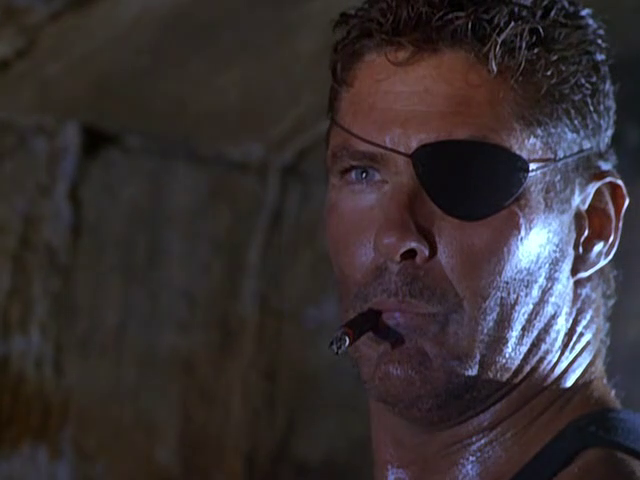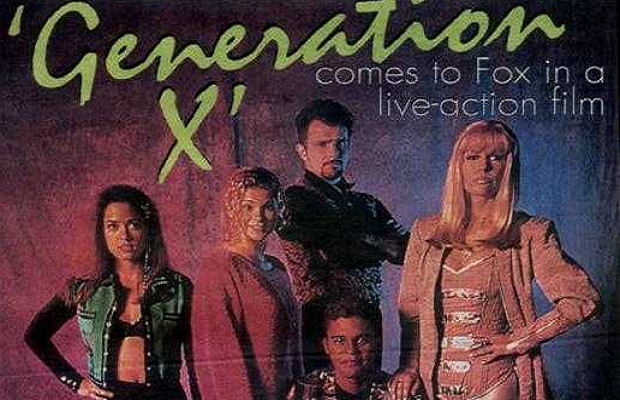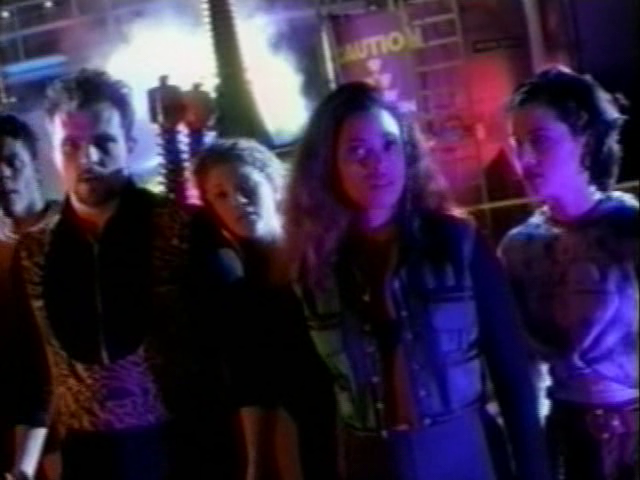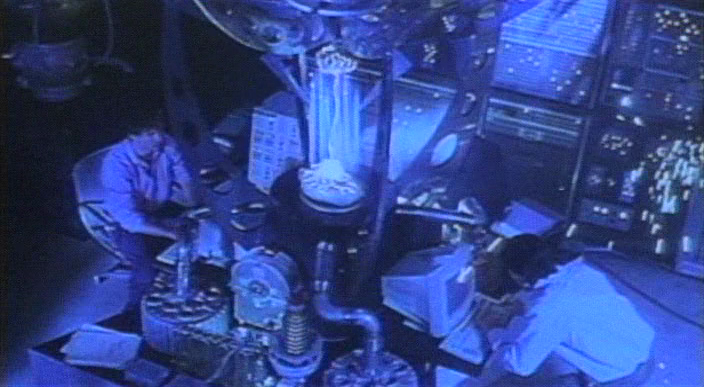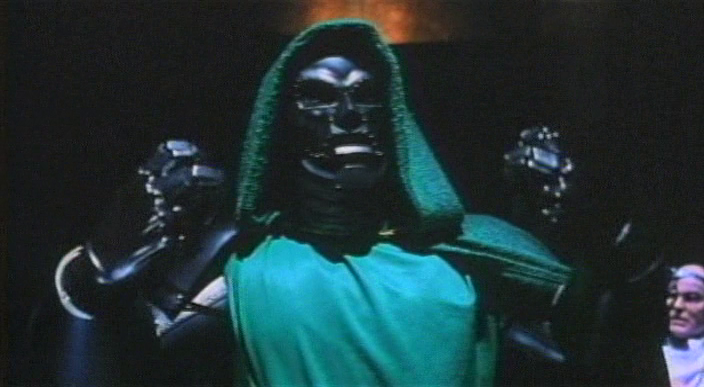Spider-Man may be Marvel’s most recognizable hero but Captain America is right up there in the “very recognizable” category and he also appeared in comics two decades before the wall-crawler made his debut, in fact, Cap also predates Marvel Comics having been created by Joe Simon and Jack Kirby for what was then called Timely Comics, yet when one looks back at his trip to the big screen it was anything but smooth.

Captain America was actually the first Marvel character to grace the big screen, having appeared in a Republic serial back in 1944, but it would take another thirty years before a Marvel character would get a theatrical release, that would be Howard the Duck in 1984, yet that's not to say that Captain America remained trapped in the pages of Marvel Comics all those years as he had a brief stint as a member of The Marvel Super Heroes, a cartoon produced by Grantray-Lawrence Animation in the 60s, and there was even two attempted Captain America pilots in the 70s starring Reb Brown as a reluctant version of the star-spangled hero, but then the 90s rolled around and Cap was finally going to get a feature-length live-action movie.

"Fear me!"
Who would you entrust to helm a movie starring one of Marvel’s premier superheroes? Would the likes of Steven Spielberg or James Cameron be a great choice to direct such an icon? How about Richard Donner who brought the world Superman: the Movie or would that be too obvious? Well, back in the 80s, when the Cannon Film Group was attached to the project, they had tapped Deathwish director Michael Winner to helm their Captain America feature so even in that early stage of development we weren’t talking big-budget adventure film, but when Menahem Golan left Cannon part of his severance package was control of 21st Century Film Corporation and that allowed him to walk away with the film rights to the Captain America character. Which one must admit is a pretty good going away present. Enter Albert Pyun and with him, any chance of this movie being a blockbuster was lost, like tears in the rain.

They’d have been better off hiring the actual Red Skull to direct.
Albert Pyun made a name for himself when his first film The Sword and the Sorcerer grossed ten times its budget but that success was never achieved again, with only his film Cyborg provided him with any financial if not critical success, so he remained a staple of cheapie action films throughout the 80s and 90s and thus the question as to why producer Menahem Golan thought Pyun was the right guy to helm a Captain America film is up there with the Riddle of the Sphinx. As with most comic book adaptations of the time filmmakers felt no obligation to be faithful to the source material and screenwriter Stephen Tolkin was no different as his screenplay for Captain America was only slightly more faithful than the Reb Brown television Captain America from the 70s, at least in this movie Captain America would be a WWII Super Soldier who found himself frozen and then thawed out in modern times, sadly, that was about the extent of its similarities to the comic book.

Note: Bucky Barnes will not be joining Cap in this movie.
The movie opens in 1936 with the fascist Italian government looking for a child prodigy to complete their experimental project to create a Fascist supersoldier which, for some reason, entails kidnapping a young boy and brutally murdering his entire family, yet this cruel experiment does somehow results in the creation of the Red Skull. Now, to say this differs from the pages of the comic would be a bit of an understatement as that is not even remotely the origin of the Red Skull and why they made him an Italian is beyond me, not to mention that making him a “reluctant villain” is just bizarre. In the comic Johann Shmidt was a Nazi officer and confidant of Adolf Hitler, who was groomed by the Nazi leader and given a grotesque red skull mask that would make him the embodiment of Nazi intimidation, and once he took on the mantle of “The Red Skull” he was appointed as the head of Nazi terrorist activities, which consisted of both external espionage and sabotage, and it was his actions that led to the United States government countering with their superhero/counterintelligence agent, Captain America.

Note: The original Captain America mask had holes that allowed actor Matt Salinger's ears to poke through, but this caused uncomfortable chafing so plastic ears were glued on instead, which looks rather silly. What happened to the idea of suffering for your art, Matt?
After that “exciting” opening we jump ahead a few years to where we find that the procedure's inventor Dr. Maria Vaselli (Carla Cassola), had fled Nazi Germany due to her objections over the cruelty of using a young boy for their experiments and is now working for the American government, only this time with a perfect volunteer in the form of Steve Rogers (Matt Salinger), a frail man who was excluded from the draft due to being partly crippled by polio. This time out she is able to achieve a much better result than a facially deformed fascist madman, so let's hear it for progress. The experiment is a great success, with Steve Rogers now having the strength and speed of a world-class athlete, but the Red Skull had a spy on hand and Vaselli is murdered before any more supersoldiers could be created and a wounded Steve Rogers is the only hope we have in stopping the Nazis from launching a new-fangled missile at the United States.

Is it just me or does the Red Skull look like someone who was boiled alive?
Things don’t as planned and Captain America is easily defeated by the Red Skull (Scott Paulin) and is quickly tied to a prototype intercontinental ballistic missile that is targeted at the White House, this is certainly not Captain America’s finest hour, but he does manage to seize hold of the Red Skull’s arm just before the rocket launches, which forces the Red Skull to “accidentally” cut off his own hand. Just as the missile is about to hit the White House, where a young boy named Tom Kimball is taking photographs in the middle of the night, Captain America kicks one of the missile's fins and changes its course mere yards from its target. The missile eventually crashlands somewhere in Alaska where Steve Rogers remains frozen for the next 50 years, that is until he is found by a team of German researchers.

“If this melts and an alien monster pops out, I’m calling Kurt Russell.”
Meanwhile, the boy who had witnessed Captain America saving the White House has grown up and is now The President of the United States (Ronny Cox) and he has an aggressive new pro-environmentalist legislation that angers the military-industrial complex, headed by General Fleming (Darren McGavin) who is in league with a shadowy organization that has used the Red Skull for a variety of political assassinations over the years. The President informs his childhood friend Sam Kolawetz (Ned Beatty), a reporter and conspiracy theorist concerning all things Red Skull related, about the man found in the ice and how believes him to be the same individual he saw riding a missile all those many years ago and he wants Sam to find him, unfortunately, the Red Skull is also aware of this new development and he dispatches his daughter Valentina (Francesca Neri) to Alaska with orders to kill Captain America.

Get used to this vacant stare, it is his default expression.
Sam Kolawetz arrives in the nick of time to save Cap from the clutches of Valentina but our hero doesn’t believe Sam when he’s told that it’s been fifty years since he saved the White House, or that the Red Skull is running around orchestrating assassinations of people who Rogers has never even heard of, and when he notices that Sam’s truck is a Volkswagen he assumes that the reporter actually a Nazi spy and steal the dude’s truck and heads for sunny California to hook up with his old girlfriend Bernice Stewart (Kim Gillingham), only it has been fifty years and his old girlfriend is really old, also married and with a daughter, Sharon, who is young and hot as well as being played by the same actress.
After catching up on some “World History” via VHS tapes at Sharon’s house Steve comes to the conclusion that maybe he was a bit of a dick for stealing Sam’s truck, unfortunately, recriminations come too late as Valentina shows up at Bernice’s house and tortures both Sam and Bernice to death in an attempt to get the location of where Captain America is hiding. So now it’s up to Steve and Sharon to track down the Red Skull and stop whatever nefarious plane he has, which has something to do with using a brain implant to turn the President into a puppet, but by this time even the most faithful of viewer will have checked out as it’s truly amazing how much stupidity can fit into a 97-minute movie and with Matt Salinger’s complete lack of screen charisma, and some of the laziest action sequences ever put to film, this movie is a real chore to get through at times.

Captain America seen here looking as tired and beat up as the script.
Stray Observations:
• The Italian fascists force the boy to watch his family murdered, gunned down right before his eyes, but is that the best idea when you want this kid to grow up to be your superweapon against your enemies? Wouldn’t he more than likely turn on his masters?
• I’m not sure why Captain America was the “only hope” to stop the launch of the Red Skull’s missile, it’s not like the missile is in some heavily fortified mountain, so why wouldn’t an aerial bombardment be an option? And if that isn’t an option at least send a commando team along with your never-before-tested supersoldier.
• In Captain America’s first encounter with the Red Skull, Rogers is beaten so fast it’s kind of embarrassing.
• Captain America doesn’t think of diverting the path of the missile until it’s almost at the White House. What was he doing the entire time it was flying across the Atlantic Ocean, watching an in-flight movie?
• The President’s environmental plan is to cut America’s solid waste output by 90% in just six months, which is patently ridiculous and harder to swallow than anything found in the pages of Marvel Comics.
• When Captain America bursts out of his block of ice he immediately runs off to…where exactly? He doesn’t even ask his rescuers where he is but simply jogs off across the ice fields of Alaska.
• Steve Rogers sees that Ned Beatty’s car is of German manufacture so he immediately assumes “This guy must be a German spy!” but if driving a Volkswagen is that big of a giveaway why would a spy be driving one? I guess we’ll chalk this one up to Steve’s still thawing brain.
• When Captain America saves the President from falling, he tells Cap “They’ve got Sharon” but how does he know who Sharon is or even her name? Did he read ahead in the script?
• Steve Rogers and Sharon find their way to Italy via information found in Dr. Vaselli’s diary but there is no reason to believe the Red Skull would be living in his hometown under his original name, in fact, they only find out where actually he is because Valentina drops her purse that has the address of their current evil lair in it. Glad to see that the heroes win because the villains are morons.
• According to screenwriter Stephen Tolkin the Red Skull got a plastic surgery make-over because "I didn't think people wanted to keep looking at this horrible skull face forever.”

Sure, this look is so much more appealing.
If you can forgive how silly Captain America looks in the movie, goofy glued-on ears and all, the film still fails as an action film because not only is the thing clumsily edited to hide the fact that no one on set had any idea as to how to choreograph an action scene – tight shots and dark scenes are used to hide this deficit – but even if you let all that slide you still have a script that leaves talented actors like Ronny Cox, Ned Beatty and Darren McGavin sounding like guys who wouldn’t get part in a high school play, on the plus side, the dialogue is so unnatural and lame that when the clunky exposition is rattled off it is almost charming in its awfulness. The only standout moment in the film is when Steve Rogers “A man from another time” encounters his now-aged girlfriend and it’s a very sweet and tender moment with both actors being quite convincing, but then Bernie is tortured to death a little while later so that Cap can run off with her young daughter, and that’s not cool.

“I’m sure your mother would have wanted it this way.”
Director Albert Pyun has gone on record saying that "It's pretty difficult to make a film when there were times we actually had no money in the bank" and while this can explain away some of the movie’s failings, such as how cheap everything looks, that is only one of many issues this film suffers from. What’s odd is that Ronny Cox has since commented on the film saying “It remains to this day the finest script I have ever read... how those guys messed that film up, I will never know" which really begs the question, what was Tolkin’s original script like and where did it all go so drastically wrong? Needless to say, this film will make fans of “So bad it’s good” cinema happy but die-hard fans of Captain America from the Marvel Comics are left with another painful reminder that the road to the Marvel Cinematic Universe was a rocky one and that this entry was but one of the bigger bumps along the way.

Note: Albert Pyun has since released a “Director’s Cut” with 14-minutes of additional footage and some re-arranging of scenes, but the end result wasn’t any kind of improvement and it comes across more as a fan edit than a proper movie.






